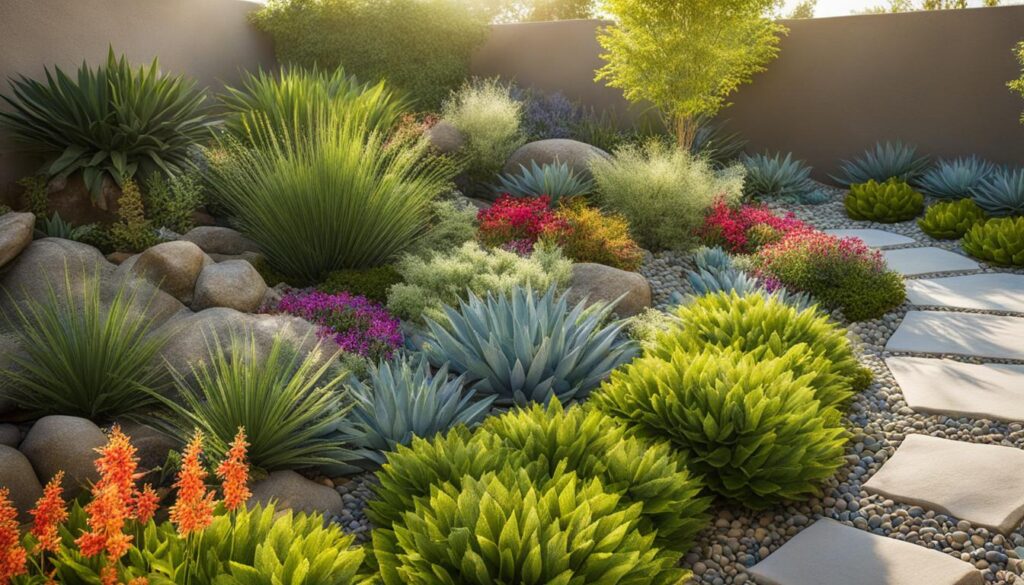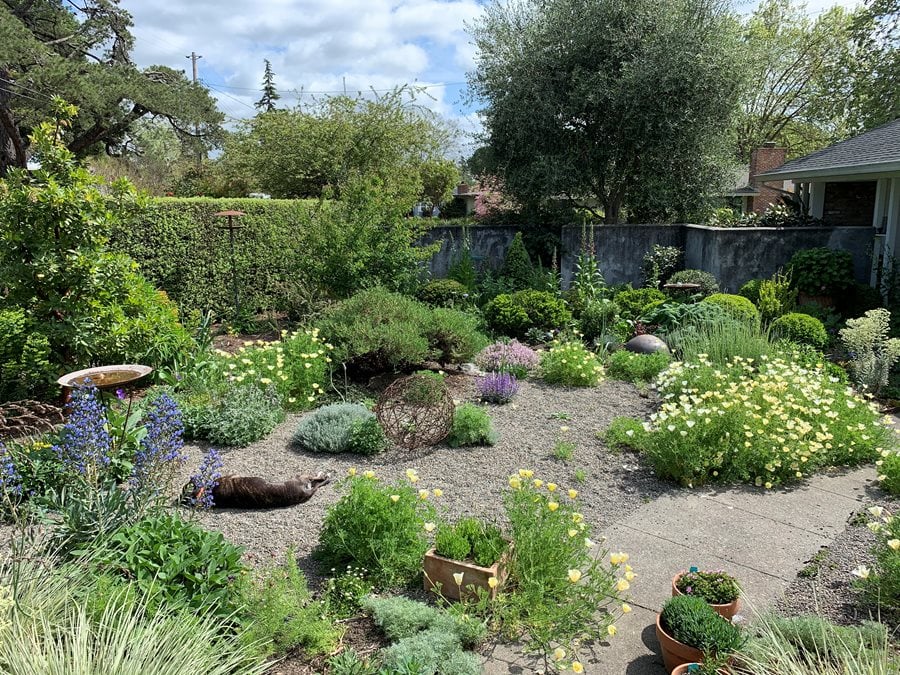Understanding Dry Climates

Gardening in dry climates presents unique challenges that require careful planning and adaptation. Water scarcity, scorching temperatures, and potential water restrictions are just a few factors that make cultivating a lush garden in these regions a feat of ingenuity.
Characteristics of Dry Climates
Dry climates are characterized by low annual rainfall and high evaporation rates, making water conservation a critical aspect of successful gardening. These climates can be further categorized into different types, each with its own distinct characteristics and challenges:
- Desert Climates: These regions experience extremely low rainfall, often less than 10 inches per year, and high temperatures that can reach scorching levels. The arid conditions create a harsh environment for plant growth, with limited soil moisture and high rates of evaporation.
- Mediterranean Climates: These regions are characterized by hot, dry summers and mild, wet winters. While rainfall is more abundant than in deserts, it is concentrated in the winter months, leaving summers relatively dry. This seasonal variation in rainfall presents challenges for plant selection and irrigation management.
- Semi-Arid Climates: These regions fall between desert and humid climates, with rainfall ranging from 10 to 20 inches per year. They experience a wider range of temperatures, with hot summers and cooler winters. While rainfall is more frequent than in deserts, it is still insufficient for many traditional garden plants.
Native Plants Adapted to Dry Climates
Dry climates are home to a diverse array of plants that have evolved unique adaptations to survive and thrive in these challenging conditions. These plants have developed strategies to conserve water, tolerate extreme temperatures, and withstand periods of drought.
- Succulents: These plants store water in their leaves, stems, or roots, allowing them to survive long periods without rainfall. Examples include cacti, agaves, and aloes, which are well-suited for dry gardens.
- Xerophytes: These plants are adapted to arid environments and have developed various strategies to conserve water, such as deep root systems, thick leaves with waxy coatings, and reduced leaf surfaces. Examples include yuccas, junipers, and sagebrush.
- Drought-Tolerant Trees: Some trees, such as olive trees, mesquite trees, and palo verde trees, have adapted to dry climates by developing deep root systems to access groundwater, reducing leaf surface area to minimize water loss, and storing water in their trunks.
Water-Wise Design Principles

A water-wise garden in a dry climate prioritizes efficient water use, minimizing water waste, and promoting plant health. Achieving this requires a thoughtful design approach that considers the unique challenges of arid environments.
Grouping Plants with Similar Water Needs
Grouping plants with similar water requirements together is a key principle for water-wise gardening. This approach ensures that each plant receives the appropriate amount of water, preventing overwatering or underwatering. Grouping plants allows for targeted watering strategies, maximizing water efficiency.
Plant Types and Water Requirements
| Plant Type | Water Requirements | Suitable Locations |
|---|---|---|
| Succulents | Low | Rock gardens, borders, containers |
| Cacti | Very low | Rock gardens, xeriscapes |
| Native grasses | Moderate | Groundcover, meadows, borders |
| Shrubs | Moderate to high | Borders, hedges, screens |
| Trees | High | Shade trees, focal points |
Mulching
Mulch plays a vital role in water-wise gardening. It acts as a protective layer over the soil, reducing water evaporation and soil temperature. Mulch helps retain moisture, reducing the need for frequent watering.
"Mulch is a valuable tool in a dry climate garden, acting as a shield against water loss and temperature extremes."
Common mulch materials include wood chips, bark, straw, and compost. These materials decompose slowly, enriching the soil over time.
Selecting Water-Wise Plants

Choosing the right plants is crucial for a successful water-wise garden in a dry climate. These plants are adapted to survive with minimal water, making them ideal for conserving water and maintaining a thriving landscape.
Ground Covers
Ground covers are excellent for suppressing weeds, reducing soil erosion, and adding visual interest to the garden. Here are some drought-tolerant options:
- Creeping Thyme (Thymus serpyllum): This low-growing, aromatic herb thrives in full sun and well-drained soil. It features small, fragrant leaves and delicate pink flowers. Creeping thyme requires minimal watering once established and can be used as a ground cover, edging, or even in rock gardens.
- Dwarf Mondo Grass (Ophiopogon japonicus): This grass-like perennial forms dense mats of dark green foliage, providing a lush ground cover. It tolerates shade and drought conditions and is suitable for areas where foot traffic is minimal.
- Ice Plant (Delosperma cooperi): This succulent ground cover features fleshy, bright green leaves and vibrant pink flowers. It is extremely drought-tolerant and thrives in hot, sunny conditions. Ice plant is an excellent choice for slopes and areas with poor soil.
Shrubs
Shrubs add structure and visual appeal to a dry climate garden. Here are some drought-tolerant options:
- California Lilac (Ceanothus): This native shrub boasts fragrant, blue or white flowers in spring and attractive evergreen foliage. It prefers full sun and well-drained soil. California Lilac requires minimal watering once established and is a great choice for attracting butterflies and hummingbirds.
- Desert Willow (Chilopsis linearis): This deciduous shrub features willow-like leaves and trumpet-shaped flowers in shades of pink, purple, or white. It is extremely drought-tolerant and thrives in hot, sunny conditions. Desert Willow is a fast-growing shrub that can be used as a screen or specimen plant.
- Rosemary (Salvia rosmarinus): This aromatic herb is known for its needle-like leaves and fragrant flowers. It prefers full sun and well-drained soil and is extremely drought-tolerant. Rosemary can be used as a hedge, edging, or even in containers.
Trees, Creating a water-wise garden in dry climates
Trees provide shade, privacy, and a sense of grandeur to a dry climate garden. Here are some drought-tolerant options:
- Olive Tree (Olea europaea): This evergreen tree features silvery-green leaves and small, fragrant flowers. It is extremely drought-tolerant and thrives in full sun and well-drained soil. Olive trees are known for their longevity and can provide a beautiful focal point in the garden.
- Desert Ironwood (Olneya tesota): This slow-growing, deciduous tree features dark green leaves and fragrant, purple flowers. It is extremely drought-tolerant and thrives in hot, sunny conditions. Desert Ironwood is a long-lived tree that can provide a dramatic statement in the landscape.
- Palo Verde (Parkinsonia aculeata): This deciduous tree features bright green, thorny stems and yellow, fragrant flowers. It is extremely drought-tolerant and thrives in hot, sunny conditions. Palo Verde is a fast-growing tree that can provide a canopy of shade in the summer.
Efficient Irrigation Techniques: Creating A Water-wise Garden In Dry Climates

In dry climates, efficient irrigation is crucial for maintaining a thriving garden while conserving precious water resources. By understanding and implementing the principles of efficient irrigation, you can significantly reduce water usage and ensure your plants receive the water they need to flourish.
Drip Irrigation
Drip irrigation is a highly efficient method that delivers water directly to the roots of plants, minimizing water loss through evaporation and runoff. This method uses a network of pipes, emitters, and tubing to deliver water slowly and precisely to the root zone.
- How it works: Water is delivered through a series of small emitters or drippers placed near the base of each plant. These emitters release water slowly and steadily, allowing the soil to absorb it gradually.
- Advantages:
- Water conservation: Drip irrigation delivers water directly to the roots, reducing evaporation and runoff, saving up to 50% of water compared to traditional sprinkler systems.
- Increased plant health: By providing consistent moisture, drip irrigation promotes healthy root development and reduces the risk of fungal diseases.
- Reduced weed growth: Since only the root zone is watered, drip irrigation minimizes moisture available for weed growth.
- Easy to customize: Drip irrigation systems can be easily customized to meet the specific water needs of different plants.
- Disadvantages:
- Initial cost: Setting up a drip irrigation system can be more expensive than traditional sprinkler systems.
- Maintenance: Drip irrigation systems require regular maintenance to ensure proper functioning and prevent clogging.
- Not suitable for all plants: Some plants, such as shallow-rooted plants or those that require frequent watering, may not be suitable for drip irrigation.
Soaker Hoses
Soaker hoses are another efficient irrigation method that provides water directly to the root zone of plants. They are flexible hoses with small holes that release water slowly and evenly along their length.
- How it works: Soaker hoses are laid along the base of plants, and water is delivered through small holes that allow water to seep into the soil gradually.
- Advantages:
- Water conservation: Soaker hoses deliver water directly to the roots, reducing evaporation and runoff.
- Easy to install: Soaker hoses are relatively easy to install and can be moved around as needed.
- Affordable: Soaker hoses are typically less expensive than drip irrigation systems.
- Disadvantages:
- Less precise watering: Soaker hoses may not deliver water as precisely as drip irrigation systems, potentially leading to overwatering or underwatering.
- Limited customization: Soaker hoses are less customizable than drip irrigation systems, making it difficult to tailor watering to specific plant needs.
- Shorter lifespan: Soaker hoses have a shorter lifespan than drip irrigation systems and may need to be replaced more frequently.
Water-Wise Sprinkler Systems
Water-wise sprinkler systems are designed to minimize water waste by using efficient sprinkler heads and controllers. They can be programmed to deliver water only when and where it is needed.
- How it works: Water-wise sprinkler systems use high-efficiency sprinkler heads that deliver water in a precise pattern, minimizing overspray and runoff. They are often equipped with controllers that allow for customized watering schedules based on factors like weather conditions and plant needs.
- Advantages:
- Water conservation: Water-wise sprinkler systems can significantly reduce water usage compared to traditional sprinkler systems.
- Increased plant health: By providing consistent and efficient watering, water-wise sprinkler systems promote healthy plant growth.
- Reduced maintenance: Water-wise sprinkler systems are often designed to be low-maintenance and require less frequent adjustments.
- Disadvantages:
- Higher initial cost: Water-wise sprinkler systems can be more expensive than traditional sprinkler systems.
- Less efficient than drip irrigation: Water-wise sprinkler systems are still less efficient than drip irrigation in terms of water conservation.
- Potential for overwatering: If not properly programmed, water-wise sprinkler systems can still lead to overwatering.
Essential FAQs
Creating a water-wise garden in dry climates - What are some common mistakes people make when gardening in dry climates?
Common mistakes include overwatering, neglecting to mulch, planting water-hungry plants, and not adapting irrigation to weather conditions.
How often should I water my water-wise garden?
Watering frequency depends on factors like plant type, soil type, and weather. It's best to check soil moisture regularly and water deeply but less frequently.
What are some good sources of information on water-wise gardening?
Local nurseries, gardening clubs, and online resources like university extension services can provide valuable information tailored to your specific region.
Can I use greywater for my garden?
Greywater can be used for irrigation, but it's important to use it safely and responsibly. Consult local regulations and consider using a filtration system.
Is it possible to have a colorful and visually appealing water-wise garden?
Absolutely! Many drought-tolerant plants come in a variety of colors, shapes, and textures, allowing you to create a visually stunning garden that thrives in dry conditions.
